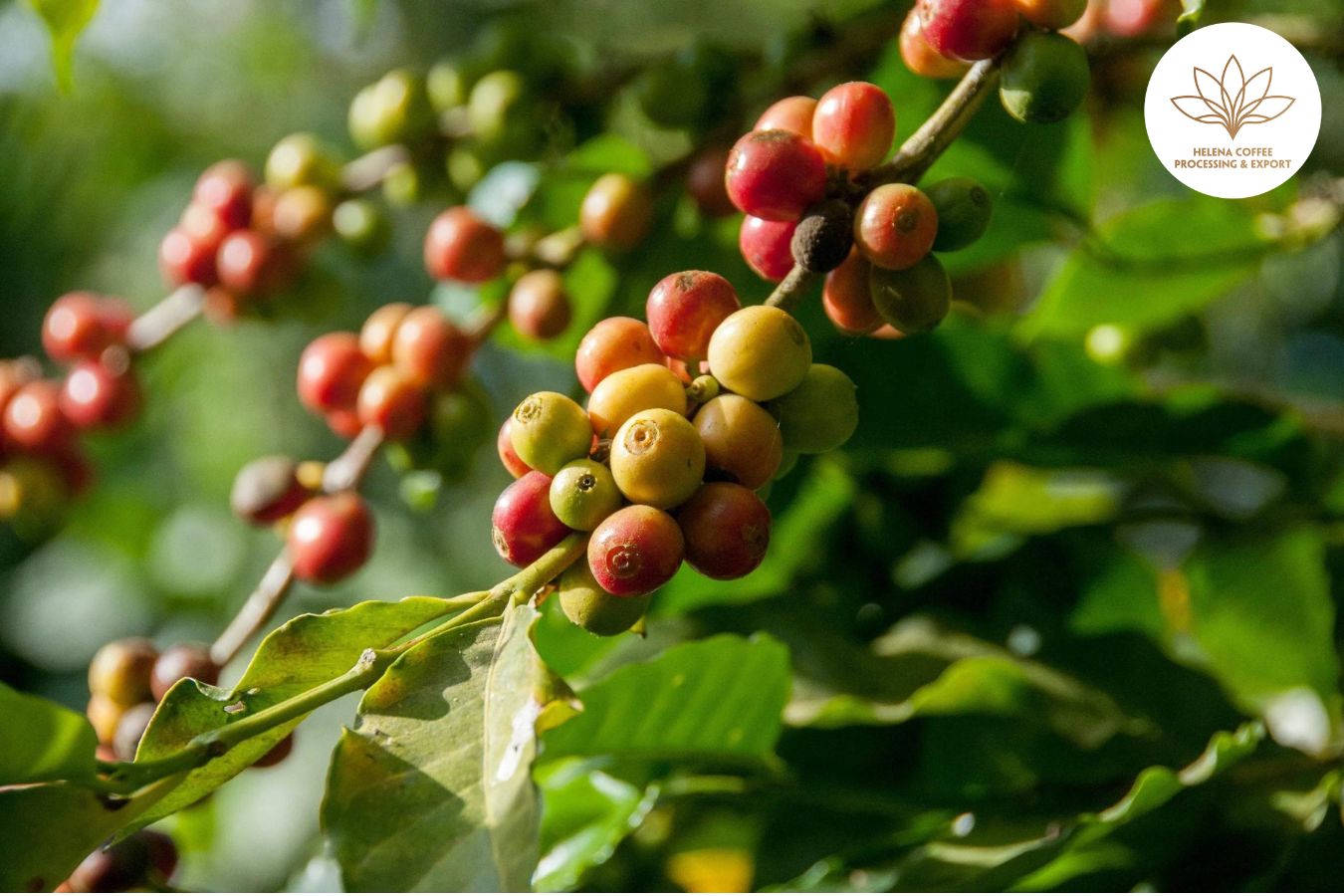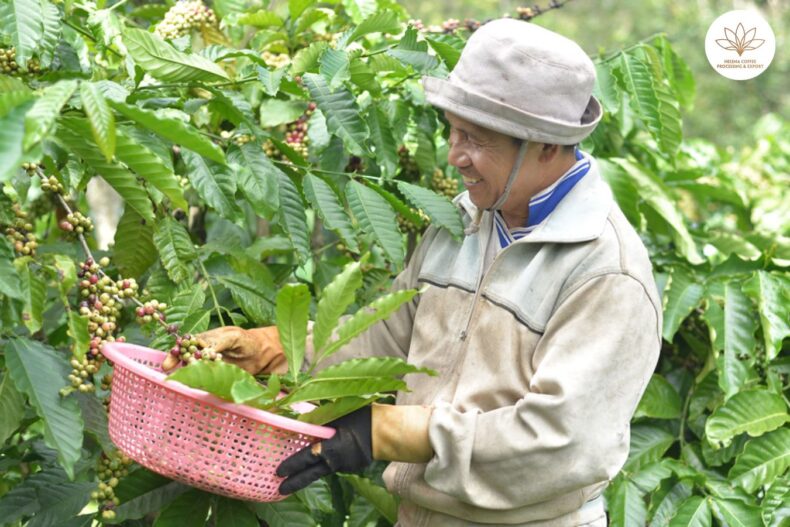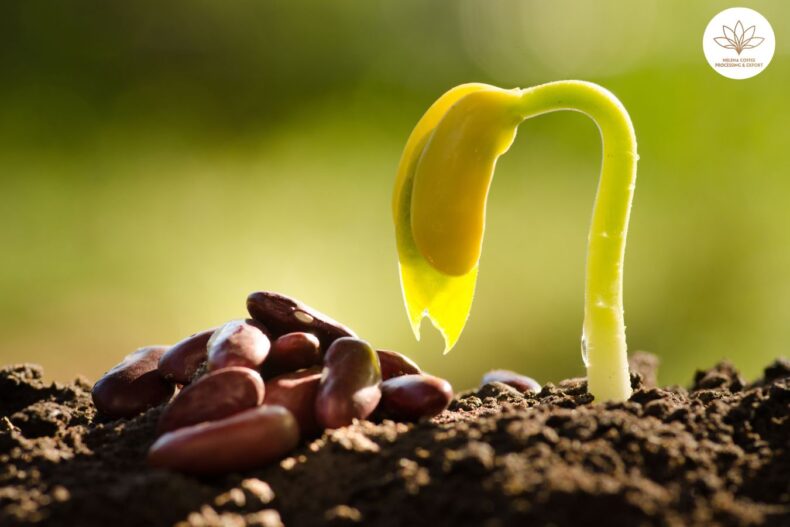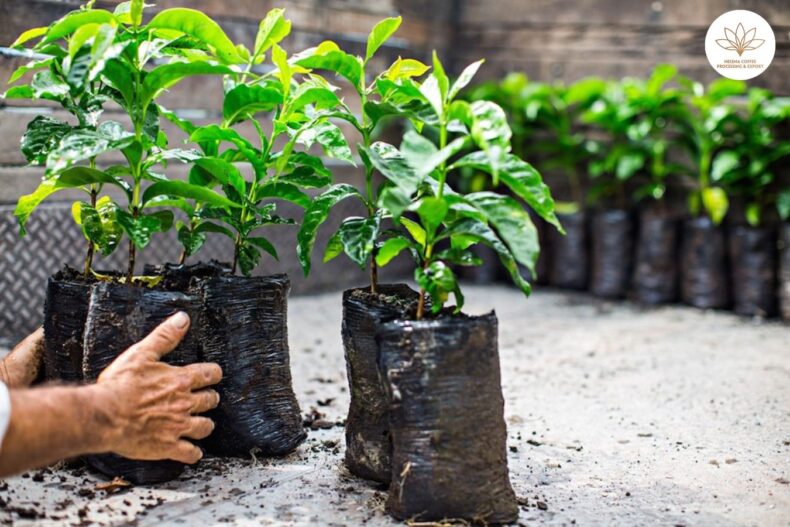
Coffee seeds must go through a rigorous selection process so that the bean has all the necessary properties and gives rise to a highly productive plant with desirable characteristics for the producer and the market.
In general terms, the seeds are the first step for an investment of approximately 20 years in which the crop will be producing coffee and will represent important income for the coffee grower; However, obtaining suitable seeds is not an easy task in many producing countries and this can generate significant losses of time and capital.
With the purpose of building a guide to buying coffee seeds, I spoke with Carlos Fonseca, agronomist and technical manager of the Coffee Institute of Costa Rica (ICAFE) , with Axel Lenin Bueso Perdomo, technician in business management and agrocoffee companies and part of the Honduran Coffee Institute (IHCAFE) , and with Harvey Lesmes, agronomist and extension agent of the National Federation of Coffee Growers (FNC) of Colombia . Continue reading and find out what they told me.
Seed quality and impact on subsequent stages of production
The quality of the seeds is extremely important for the later stages of cultivation because it will allow an optimal coffee plant to be obtained in the future, with high yields and well developed.
According to Carlos Fonseca, seeds are the fundamental basis and the pillar to start the entire production process that will guarantee a long-term useful life cycle of the plantation , which is why it becomes a critical point in the cultivation of coffee.
Consequently, seeds must be harvested from crops and plots intended for their production. According to Axel Lenin Bueso, the fruits for seeds must be uniform, neither too small nor too large, and the fruit must be harvested homogeneously to obtain only the mature grains, present in the middle stratum of the plant, since that is where the fruits are found. with higher quality for seed production.
Coffee seeds can be produced by hand on the farm from the coffee plants present or in certified production lots that allow quality seeds to be obtained with some specific characteristics such as resistance to rust . Another desired characteristic in seeds is productivity, therefore, they must come from plants with high yields.
When you have low quality seeds and their origin is unknown, you can plant plants that are not genetically pure and suitable for the area. In addition, they can be susceptible to diseases, which in the future will directly impact the producer’s production and income. From a technical point of view, it is necessary to know and be certain about the origin, variety and quality of the coffee seeds that are being used to establish the plantation because the success or failure of the production process depends on it.
The key to a successful coffee production system begins with the use of excellent quality seeds, explains Harvey Lesmes. To this must be added the use of varieties adapted to the agroecological conditions of the region and that have a humidity of 12% to begin the germination process.
In turn, the seeds must go through certain technical processes that guarantee quality, for example, being dried under shade and stored in appropriate conditions to reduce the risk of loss of viability and vigor of the embryo.
Where to buy coffee seeds?
In Costa Rica, the seed production process must comply with established regulations and be registered with the National Seed Office , the regulatory body for seed production.
In this case, ICAFE has been producing certified seeds in Costa Rica for more than 40 years and is authorized to produce and sell seeds of different coffee varieties, says Carlos.
ICAFE offers the producer coffee seeds of certified quality, free of impurities, with a germination percentage greater than 85% and with the necessary vigor for adequate germination. The seeds produced at ICAFE do not have a high cost, that is, their commercial value corresponds only to the production costs to encourage producers to acquire certified seeds and renew their cultivation with new varieties, avoiding the aging of the plantation.
Coffee seeds are offered centrally from the main ICAFE office and are delivered to the regional offices after the producer makes the request to purchase the seed. Additionally, the different benefit cooperatives have access to seeds.
In Honduras, ICHAFE is the leading institute in sustainable coffee growing in the country and is in charge of the sale of certified and quality seeds, which are harvested from established experimental lots, explains Axel Lenin. Here, ICHAFE has points of sale in the 15 departments and there producers can purchase coffee seeds duly sealed and marked to guarantee their quality and identification.
In Colombia, the National Coffee Research Center (CENICAFE) and the National Federation of Coffee Growers (FNC) are the entities in charge of producing, supplying and delivering certified seeds with rust resistance to the country’s producers. The seed is acquired free of charge through the Regional Coffee Committees through the extension agent of the same entity or from the coffee Cooperatives with the commitment that they use it under the stipulated technical criteria.
Certified seeds with a germination percentage between 75 and 85% are produced in the country. The seeds can be easily identified by the farmer since they come packaged and marked, in addition to having a code, germination percentage, grain moisture, purity, number of seeds per kilogram, production batch and expiration date, explains Harvey.
The seed production process by research institutes in Costa Rica and Colombia are similar, according to Carlos; However, in Central America almost 80% of the seeds used are produced by hand or on the producers’ farms. Therefore, there are very few seeds that are certified and meet all the necessary regulatory requirements.
In many cases, producers produce their own seeds or buy them from neighbors on other farms. In Honduras, says Axel Lenin, the seed is supplied by agronomists who have registered but not certified seeds, which guarantees some degree of genetic purity.
Carlos explains that when farmers obtain seeds from their farms they have a high risk since it cannot be guaranteed that the seed collected has the desired characteristics, so the plant will not always inherit the specific characteristics of production and resistance to diseases that are found. required so as not to put productivity at risk.
If a producer wants to obtain seeds from his own farm, he must follow all the technical recommendations and basic requirements to have good quality seeds with the desired agronomic characteristics, explains Harvey.
The risks that a producer acquires when acquiring uncertified seeds are many since it is not possible to identify the variety of the seed, purity, contamination and other variables that in the end can cause the productive project to not go ahead .
Likewise, certified seed gives the guarantee of making claims before the competent entity because there is complete traceability of the product, which will allow knowing which batch it comes from, the harvest time, and knowing what happened in case the seed does not work. as expected. With non-certified seeds, the producer is not sure that what he is getting is what he requested.
How do seeds vary from country to country? Is it advisable to buy seeds from other origins?
In the case of seeds from different origins, in general, each country is responsible for conducting research on the varieties that best adapt to the agroecological conditions of its environment.
One of the reasons why the use of seeds from other countries is not recommended is because of the important agroecological differences that exist from one country to another, which in the end will have an impact on the behavior and development of the plants and therefore on production.
For example, in the case of Colombia , the planting altitudes of coffee cultivation are different from those of Honduras. In the Central American country, coffee is planted at low, medium and high altitudes, ranging from 600 to 1500 m asl. In Colombia, for its part, the altitudinal range oscillates between 1000 and 2200 m asl, which can obviously affect coffee varieties. coming from other origins or countries.
Furthermore, it is not advisable to use seeds from other countries because they must go through a process of agroecological adaptation to the specific conditions of the country. These investigations last more than 10 years before the seeds can be released to the market.
Likewise, the phytosanitary requirements demanded by the control entities of each country must be met to avoid the passage of diseases and pests, which would put agriculture and ecosystems at risk.
How much seed should a producer purchase?
In the case of Honduras, a planting distance of two meters between streets and one meter between plants is used. In the country, the basic planting unit is an apple, which is equivalent to 7,000 square meters, in which 3,500 coffee plants fit.
One pound of seeds contains 1,000 seeds, so about four pounds are required for one apple. Also, seeds that do not germinate, poor quality chapolas and plants with a deficient or twisted root must be taken into account, which are eliminated in the germination and seedling process.
For this reason, the producer must always make a loss calculation, more or less, of 10 to 15%. It is important to clarify that in recent years in Honduras this traditional planting density has been changing due to climate change and to achieve a more productive crop, explains Axel Lenin.
In the case of Costa Rica, between 4,000 to 6,000 coffee plants are established per hectare, 10,000 square meters and for one hectare, between three and four kilos of seeds are used. One kilo brings 2500 seeds.
In Colombia, the amount of seeds to be purchased by a producer depends on the planting density and the climatic conditions of the area where the crop will be established, whether it is planted in open exposure or under shade; However, on average, 5,000 plants are planted in one hectare of coffee and one kilo of seeds has approximately 4,000 seeds. Of them 3,500 seeds germinate and taking into account the selection process that the chapola must go through, in the end around 3,000 plants per kilo of seeds are obtained. That is, for one hectare of coffee a producer must use 1.5 kilos of seed.
General recommendations when buying coffee seeds
It is important that the producer uses the coffee seeds in the shortest possible time to avoid loss of vigor and viability of the seed. According to Axel Lenin, it is not advisable to store seeds for more than a month.
If they must be stored, it is necessary to guarantee the appropriate conditions for this, that is, store them in cool places where there are no high temperatures that dry out the seeds, without extreme variations in climate, or excess humidity that allows the development of fungi. .
To choose the right coffee seeds, you must first know the soil conditions (preferably have a physical-chemical fertility analysis), altitude, humidity, rainfall, among others, which will allow you to define which variety is best adapted to the area. where you want to establish the crop. In addition, it is necessary to establish agronomic management and the appropriate technological package to obtain good production.
When buying coffee seeds it is important to take precautions to ensure that the quality is as expected. Going to certified institutions in each country is a way to ensure the investment and success of the plantation.
Producers must have traceability of the seeds they will use and, in many cases, going to neighboring farms or unknown places can mean an impact on the crop as well as a significant loss of effort and work that will not generate the projected results.
FAQs:


